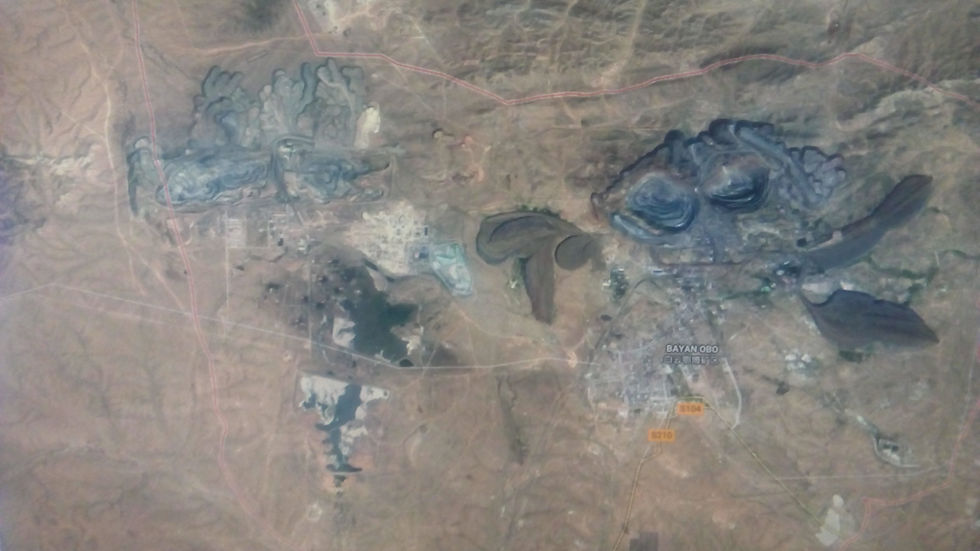16th Webinar - Indo-Pacific Strategy: Adjusting the EU Regional Role in the Context of China’s Rise
- European Guanxi

- Jun 23, 2021
- 4 min read
Report by Andrea Casari
For our 16th webinar, we had the pleasure of hosting Cristina de Esperanza Picardo, a Research Assistant at EsadeGeo, an Asia Pacific Analyst at El Orden Mundial (EOM), and a Young Leader at the Pacific Forum. The webinar was moderated by Patrizia Cogo, the president of European Guanxi. The focus of the event was the EU’s Indo-Pacific Strategy, released in April 2021, as well as the existing relations between powers in the area.
Firstly, the speaker briefly introduced the Indo-Pacific area and explained how the region represents the global centre of gravity, not only since 60% of the global population is located in the Indo-Pacific, but also as two thirds of global economic growth come from this area. Unfortunately, this also means that the Indo-Pacific faces a series of challenges, specifically geopolitical competition and climate change, as they produce 50% of global emissions. Dr. de Esperanza also introduced the main players, pointing out the centrality of ASEAN and the Quad among the many powers operating in the Indo-pacific area.
"Dr. de Esperanza went on to introduce the Indo-Pacific Strategy in further detail, although pointing out that the project is still in its infancy and is an evolution of member states strategies acting as building blocks for the EU’s mission. So why is the EU developing a strategy towards becoming one of the main actors in the area? Above all, it is a political decision, with Europe trying to take advantage of the opportunities in the region, as well as contributing to mitigate security and environmental challenges. At the same time, the economic reasons are not to be underestimated, with the Indo-Pacific being home to numerous strategic trading partners. According to the speaker, the Indo-Pacific is the latest step in the EU’s interest towards the area and, more broadly, towards Asia, with a steadily growing number of initiatives and policies being developed since the early 2010s. Some examples include the 2016 EU Global Security Strategy, the 2018 EU Security Cooperation in and with Asia and the EU Connectivity Strategy from the same year.
Not surprisingly, the involvement of the EU and China in the Indo-Pacific leads to some reflections on the mutual relationship between these two powers. While the EU’s strategy in the area tends to be inclusive towards China and promoting engagement, it must be said that certain aspects remain rather critical, in particular when it comes to security implications related to China’s rise, perceptions of China being an unfair economic player and difficulties in making China adhere to international law and rules-based connectivity. China has had some rather harsh reactions to certain EU policies while at the same doing some “damage control” through reassurance and persuasion.
And how does China factor in the EU Indo-Pacific Strategy and what are the main policy areas? The project includes a very broad range of topics in which China features prominently, including, but not limited to, maritime security, connectivity, digital governance and cybercrime, environment, and trade and investment. The EU’s involvement has led to contrasting reactions by China, which reveals some caution and suspicion towards the EU making big steps in the area. All in all, China seems more favourable to cooperating with Europe than it is with the USA.
In her final remarks, Dr. de Esperanza pointed out how, although relevant, China is not the only big power to be taken into consideration in the region, and that the EU should strengthen its relations with other regional partners, as well as the USA. Future challenges to be tackled include the management of territorial disputes, maintaining coherence and unity, and convincing Beijing that this is not a strategy put in place to isolate them but rather to promote inclusion and cooperation.
The Q&A session was particularly lively, with numerous questions addressed by the attendees. According to Dr. de Esperanza, proving its credibility as a security actor in the region even during trying times is indeed a challenge for the EU. However, the EU, with its neutrality, can be seen as a reliable partner in the area by countries which until now have had to choose to side with China, the USA, Japan, or India. Moreover, when asked about the positive effects that the supranational approach of the EU Strategy can bring to the area, Dr. de Esperanza expressed great optimism, pointing out that what is currently going on in the Indo-Pacific is very close to Europe, bringing along a sense of interconnectedness with countries also sharing common views and goals, boosting mutual cooperation. Moreover, initiatives that were originally developed for the African region can be expanded and adapted to Southeast Asia. Military cooperation would also change for the better, with the possibility of organizing a coordinated maritime presence in the area without being too invasive.
In conclusion, the speaker shares a rather optimistic view on the EU’s interest towards the Indo-Pacific area. Although the strategy is still rather vague and has received some criticism due to this, Europe’s presence in the region is being strengthened and generally looked at with a good eye, thanks to the mutual objectives shared by the various players. Eventually only time will be able to provide an answer to the many open questions and show us the results of this ambitious plan. If you want to hear more, the full webinar is available on European Guanxi's YouTube Channel.



Comments